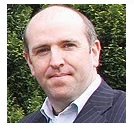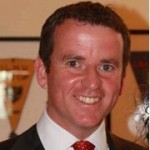Before the conference, I really did not know what to expect. I felt the conference was just going to relate to all the business students seeking to set up their own company, rather than the computing students in the DICE module. But I must say it was beyond inspiring and I really was intrigued at the idea of setting up my own company after listening to the speakers. Heres what the speakers had to say:
Niamh Bushnell – Dublin’s first Commissioner for Start Ups
Niamh spoke to us about her journey to how she got to where she is now, I was quite disappointed with Niamh’s speech due to the fact that she wasn’t very interactive, it was like she was just reading from a biography about herself. There was no movement around the stage which really made it hard to focus on the speech. Although the information about her life was rather interesting, she spoke about how she co-founded her first company Pan Research.
Niamh then went on to discuss her about her 16 years living in New York, whilst in New York she was involved in 2 start ups. I was a bit disappointed at this stage because the idea of starting up my own company really appealed to me but I felt I would have to move to another country to do well, which I would not have been comfortable with but Niamh reasured us that Dublin is recognised as a great start up city.
Niamh also acknowledged the help DCU provide such as the UStart incubator to help undergraduates. I was really happy this was mentioned because I do feel the help from DCU could really motivate and support us the students. Niamh then went on to discuss a daily newspaper which she was working on to help attract start up companies to come here to Dublin, to allow for more employment opportunities.
Heres a video of Niamh discussing her journey:
David McKernan – Founder of Java Republic
“Keep innovation, stay relevant, grow like hell”
David was the next speaker, and I must say was my favourite of the afternoon, I really engaged with Davids story, due to the fact I had knowledge of his company and also he added humour into his speech which always appeals to an audience. David started out at the bottom as an employee at a well known firm “Bewley’s” Irelands number 1 coffee industry for years now.
David was inspired by Café Aroma in San Francisco, he spoke with the manager of Café Aroma to gain a bit of inside before starting up his own company. Now look at where he is Java Republic is Ireland’s 2nd largest coffee firm. David described his journey as a “ruthless roller coaster” I learnt from David that starting up your own company comes with its ups and downs, for example in 1999 Java Republic was going by 20% every year until 2008 when the recession hit and caused problems for most businesses in Ireland. But David didn’t give up when he encountered a fall, he worked hard and it eventually passed.
David mentioned a key factor to starting up your own company is capital, David warned us about getting capital from relations as it can lead to fall outs. David told us a story about when he went to his father for money and he gave him €50,000, David insured us he father was not well off and that €50,000 was all his savings, luckily enough Davids company was a success and he could pay back his father.
David also mentioned angle investors, these are people that see potential in your idea and agree to help fund it. I must say after this speech I was beyond inspired, I never expected to have an interest in becoming an entrepreneur, but after Davids speech I had a change of heart.
Heres a quick video of by David discussing the 3 key factors for small businesses:
Next we had 3 speakers; Richard Stokes, Ronan Furlong and Eoghan Stack:
Richard Stokes – Director of Innovation in DCU
Richard has been in business for 30 years, and ensures us all that the support is there now to help students, he mentions the support there to help students like us to start up companies within Ireland. Since Richard became involved in business he’s managed to be involved in 4 start ups which is a huge accomplishment.
Richard spoke to us about the Invent building on campus located just beside the library, I have passed this building many times and was always curious what the purpose of it was, but Richard informed us that it was set up in 2001 to help students get advice and the support needed to start up their own businesses.
Richard also mentioned that from around 100 people that came to the Invent building so far 11 have managed to succeed which is unbelievable. I feel these stats would really inspirer more students to go there and try make something happen.
Ronan Furlong – Executive Director of DCU’s Innovation Campus
Ronan was our next speaker and his discussion was all about the Innovation Campus which is located only 800 metres from DCU. Ronan is in charge of the development done to the campus, such as the facilities available on the campus. Both large and small companies are found within the campus.
Ronan also mentioned Cleantech, Cleantech focuses on products, services and solutions across all industries that seek to optimise the use of natural resources for long term commercial, social and environmental sustainability. These products, services and solutions range from advanced batteries to carbon trading to water treatment technologies.
After only hearing about this place that day, I was shocked at all the big companies involved with the Innovation Campus such as Siemens and Fujitsu. Overall I found Ronans speech to be quite interesting and it gave me a greater insight into start up companies.
Eoghan Stack – Member of the DCU Ryan Academy for Entrepreneurship
Eoghan was the most inspiring of the 3, his personal story of how he became an entrepreneur was quite interesting he said that he has always wanted “to be my own boss” and I too wish for that.
The idea behind the DCU Ryan Academy really appealed to me where an amazing company like Ryanair work along side DCU filled with upcoming entrepreneurs, they aim to help develop entrepreneurs mindset. They supply people with key tips to success.
DCU Ryan Academy can help link both academia and entrepreneurial practice through partnership between Ireland’s leading young university and the family of one of the greatest entrepreneurs, Tony Ryan.
I know now where the best place to go is, if I need professional and experienced advice.
After the 3 speeches, all 3 panelists came back on to the stage for a Q & A, one question that was on my mind was asked and I was pleased it was. It was “Are entrepreneurs born or do they develop it?” I was curious about this, because If it came to the stage where I became interested in the idea of setting up my own business would I have to have grown up surrounded by the idea instead of one day just coming up with a company and making it happen. But the 3 lads ensured me that people come to them in all different shapes and sizes with all different types of knowledge about entrepreneurship and they support them to the best of their abilities and this for me is very reassuring and I am glad this question was asked.
Kealan Lennan – CEO and founder of CleverCards and CleverBug
Kealan CleverCard idea is amazing and simple, it allows the user to customise a greeting card online and then create this card and CleverCards will send it to where you want, the great thing about this app is that you can link it with Facebook and it will notify you when an important person in your life for example Mother, Father, Sister, Brother etc and will remind you a week before their birthday and you can then create a card and have it sent to them on their birthday.
My favourite thing about CleverCard is the trouble it saves people, personally I have been at that last minute situation where I must run to the shop to pick up a birthday card, and just struggle to find the right one at least with CleverCard there is thousands of templates to choose from.
Kealan really showed a different side to entrepreneurship compared to the other speakers, I personally preferred Kealan idea as there is a big aspect of technology involved which is the area I’m interested in. I do hope that one day I can achieve what Kealan has.
Sean Ahern – Founder of ThankFrank
Einstein – “If you want to live a happy life, tie it to a goal, not to people or objects”
Sean always had a passion for useful application of IT, Sean set up a consultancy called Legal IT Solution, where he helped solicitors practices go digital and paperless. In 2004 the Personal Injuries Assessment Board erased huge chunks of most practices business overnight, which put Sean out of business.
Sean was still motivated to work in IT, Sean went into Project Management and became PRINCE2 certified in 2005. Sean worked for 2 years as Project Manager, but then moved on and took a job with Accenture. Then a year later he joined Microsoft as a global program manager.
Then in 2012 Sean quit Microsoft to start up ThankFrank, the aim of ThankFrank is to share meaningful social currency that rewards people for doing good things for others. The goal is to collect as many Thanks as you can and at the end of each month you will be rewarded credits that can be spent on vouchers for shopping or they can be donated to charity.
Personally I loved how Sean got to where he was, its similar to David McKernans journey, it shows us that you have to start somewhere to make it big. Sean also added to be prepared for 3 or 4 years of “rainy days” this is interesting because it also relates back to David saying that his journey was like a “ruthless roller coaster” this is just warning us all that you will encounter difficult situations. After hearing this I will be prepared.
Heres a quick introduction:
Paul Kerley – Entrepreneur and Investor
Paul was a graduate of DCU and I was pleased someone who was in our position before was here to speak to us. Paul Kerley served as the CEO of Norkom Technologies, a global financial and compliance solutions. Along with technology companies including Fenergo, SmartBin and MindConnex Learning. Paul has done amazing things and is a true inspiration to us all, besides having done all that he also was named Technology Person of the Year by the Irish Software Association in 2009 and Ernst & Young’s Emerging Entrepreneur of the Year in 2000.
I was glad that Paul was our last speaker as he showed us that anything can happen and if you work hard you will be rewarded for it. From his speech we can see that he was certainly rewarded because he was in the same position as me one day and managed to make something of himself which is beyond inspiring.
















































 Lucy mentioned that 73% of Irish phone users have smart phones, which gave RTE the opportunity to create an app for free that could be downloaded on all smart devices. 85% of online video watched in Ireland is on demand this is an incredible percentage so RTE used “RTE player” allows users to watch content on demand which has been a huge success to keep up to date with their favourite programmes like “Love/Hate” and “Damo and Ivor”. Lucy then moved on to discuss “GAAGO” which is RTE’s premium quality online streaming service for Gaelic games outside of Ireland and it’s been very popular as it has been streamed in over 150 countries worldwide. I must say it was a very interesting talk and it was a shock to see most of the statistics they just seemed unbelievable.
Lucy mentioned that 73% of Irish phone users have smart phones, which gave RTE the opportunity to create an app for free that could be downloaded on all smart devices. 85% of online video watched in Ireland is on demand this is an incredible percentage so RTE used “RTE player” allows users to watch content on demand which has been a huge success to keep up to date with their favourite programmes like “Love/Hate” and “Damo and Ivor”. Lucy then moved on to discuss “GAAGO” which is RTE’s premium quality online streaming service for Gaelic games outside of Ireland and it’s been very popular as it has been streamed in over 150 countries worldwide. I must say it was a very interesting talk and it was a shock to see most of the statistics they just seemed unbelievable.

 Alan mentioned to use that online user is second in Europe just after TV but Alan in convinced that by next year online will be first. So this will be huge for him as companies will be more focused on looking for agencies like WolfGang to help and get their advertisements out on the online world.
Alan mentioned to use that online user is second in Europe just after TV but Alan in convinced that by next year online will be first. So this will be huge for him as companies will be more focused on looking for agencies like WolfGang to help and get their advertisements out on the online world.



